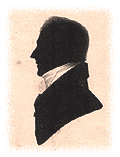Cutting Image Art
History
History of the Silhouette
The name Silhouette was taken from a Frenchman ‘Etienne de Silhouette’ and a lot of stories do not show him in a good light.
The truth is, he was a very clever man who had studied the British financial system in England. At the age of fifty his knowledge of finance and administration was highly respected. On his return to France, in 1759, Louis XV offered him the position of Controller-General of Finance, a post which he had dreamed of. He accepted and set to the task of pleasing the King. France had suffered from costly wars and Louis XV was having little success in the finance ministry. Silhouette went into the big houses and removed a lot of gold and silver for the melting pot. Anyone who sent expenses forms to the king, for their new outfit or new portrait, he rejected.
At that time the cheapest material was black and the cheapest form of portraiture was to have a shade/profile cut or painted by a miniaturist. The new cheap fashion by default was named ‘Al Le Silhouette’.
Some artists thought the name looked good so they advertised themselves as Silhouette artists and besides, if they didn’t adopt the new name they might go out of business. The new fashions traveled to England and America.
Between 1775 and 1778 Johann Kasper Lavater published a best seller ‘Essays on: Physiognomy; calculated to extend the Knowledge and the Love of Mankind’ which added to the promotion and importance of Silhouette history. I am sure it changed the destiny of many great men of that time.
Silhouette only stayed in office for eight months but his name lives on.


